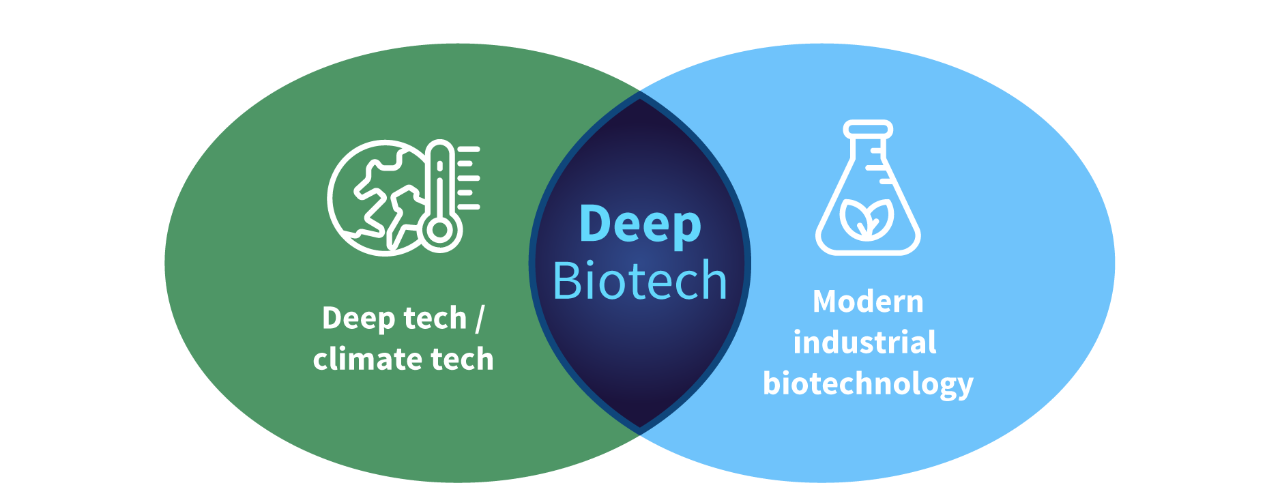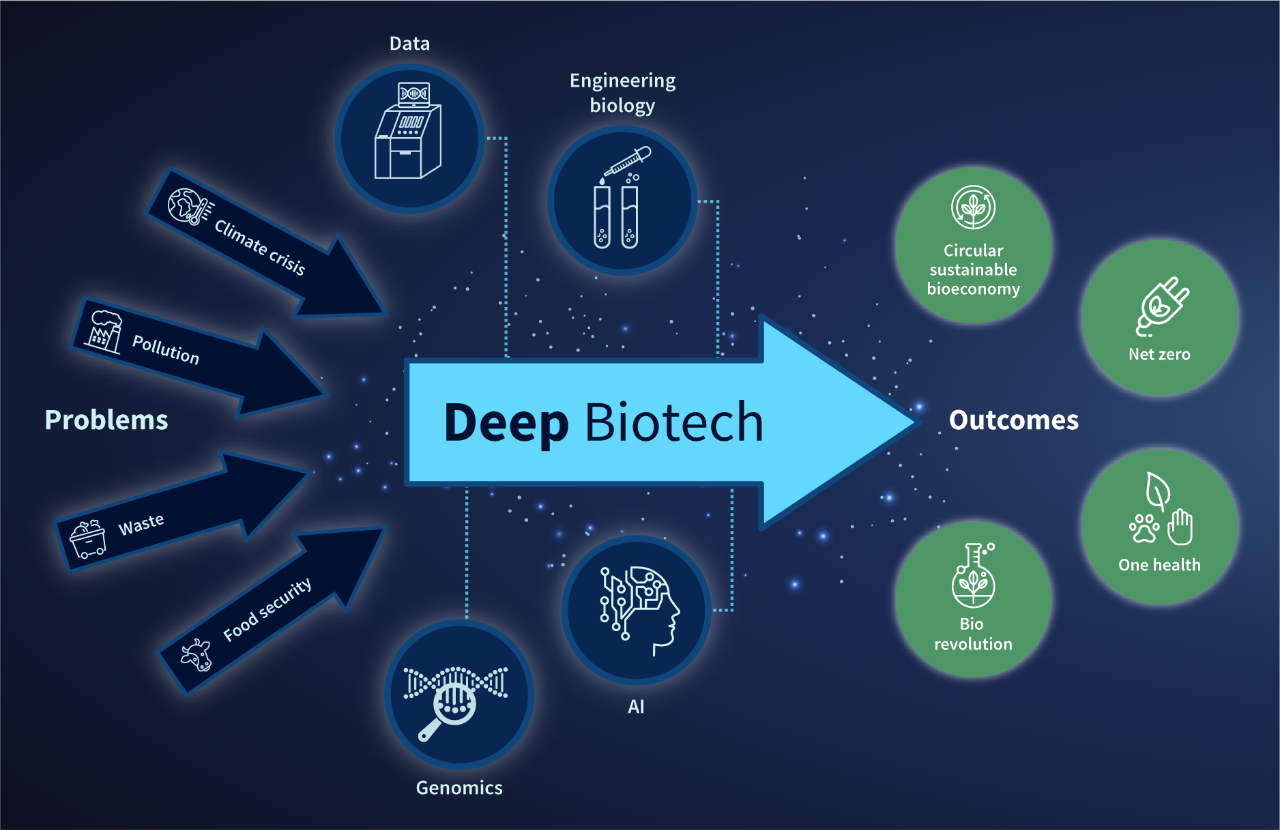THE NEW BLUEPRINT FOR DEEP BIOTECH WORKSPACES
As the world accelerates toward a more sustainable and resilient future, deep biotech, the intersection of advanced biological science, data, and engineering, is emerging as a transformative force. From carbon-negative materials and precision fermentation to bio-based manufacturing and regenerative medicine, deep biotech start-ups and scale-ups are redefining what’s possible across industries.
.png?width=2000&height=1125&name=AI%20%26%20Technology%20Whitepaper%20(15).png)
But as the science evolves, so too must the physical environments that support it. The next generation of biotech innovation demands a new approach to office and lab space, one that reflects not only technological progress, but also sustainability, adaptability, and long-term strategic value.
The deep biotech revolution and its spacital implications
Deep biotech companies often operate at the frontier of biology, computation, and engineering. These ventures require specialised infrastructure, high-spec labs, cleanrooms, controlled environments, and collaborative workspaces, to turn research breakthroughs into viable products.
However, unlike traditional biotech, deep biotech ventures tend to scale differently. They are data-driven, leaner, and increasingly digital in their workflows. As a result, the ratio of lab-to-office space and the total footprint of these companies are shifting.
- Startups and early-stage firms may choose modular or flexible labs, co-located within shared innovation hubs, to minimise overhead costs and environmental impacts.
- Scaling companies often look to strategic up-sizing, consolidating operations into sustainable facilities that can accommodate automation, bioprocessing, and pilot-scale manufacturing.
- Conversely, mature organisations might down-size or repurpose underutilised office space, particularly as hybrid work and digital R&D tools reduce the need for traditional desks and meeting rooms.

sustainablITY AT THE CORE OF DESIGN
The sustainability imperative runs deep in both the mission of deep biotech and the physical space it occupies, Environmentally responsible design is no longer a “nice to have”, it’s a reflection of company values and investor expectations.
Key strategies include:
- Energy efficient lab design: Smart HVAC systems, LED lighting, and advanced fume hood technologies can drastically reduce energy consumption in high-demand environments.
- Circular materials and construction: Using low-carbon materials and modular construction enables flexibility and reduces waste during future reconfigurations.
- Water conservation: Closed-loop systems and green chemistry practices help minimise water use and chemical waste.
- Adaptive reuse: Transforming older industrial or office buildings into modern biotech labs supports urban regeneration and reduces the carbon footprint of new construction.
For developers, landlords, and operators, sustainability credentials are increasingly central to attracting deep biotech tenants. Meanwhile, for companies, sustainable space is not just a cost consideration, it’s a recruitment tool, and ESG differentiator, and a foundation for long-term resilience.
THE FUTURE - FLEXIBLE, HYBRID, AND PURPOSE-DRIVEN
The deep biotech workspace of the future will likely look very different from the traditional lab campus of the past. Expect to see;
- Flexible lab modules that can evolve with changing R&D needs.
- Smarter space utilisation enabled by data-driven occupancy analytics.
- Hybrid collaboration models, where computational biologists work remotely while wet-lab scientists share dynamic, resource-efficient spaces.
These trends align with a broader real estate shift, organisations are revaluating whether to up-size, down-size, or reconfigure in response to hybrid work models, capital efficiency, and sustainability targets. For deep biotech companies, these choices are deeply strategic, balancing growth with purpose and environmental responsibility.

Deep biotech represents one of the most exciting frontiers in science and sustainability. Yet, its success depends not only on what happens in the lab but also where it happens. Thoughtfully designed, flexible, and sustainable lab and office environments are critical enablers of innovation.
References:
https://www.ifm.eng.cam.ac.uk/uploads/Industrial_Biotech_-_Report_vPUBLICATION_240323.pdf




LET'S TALK ABOUT YOUR NEXT REQUIREMENT

